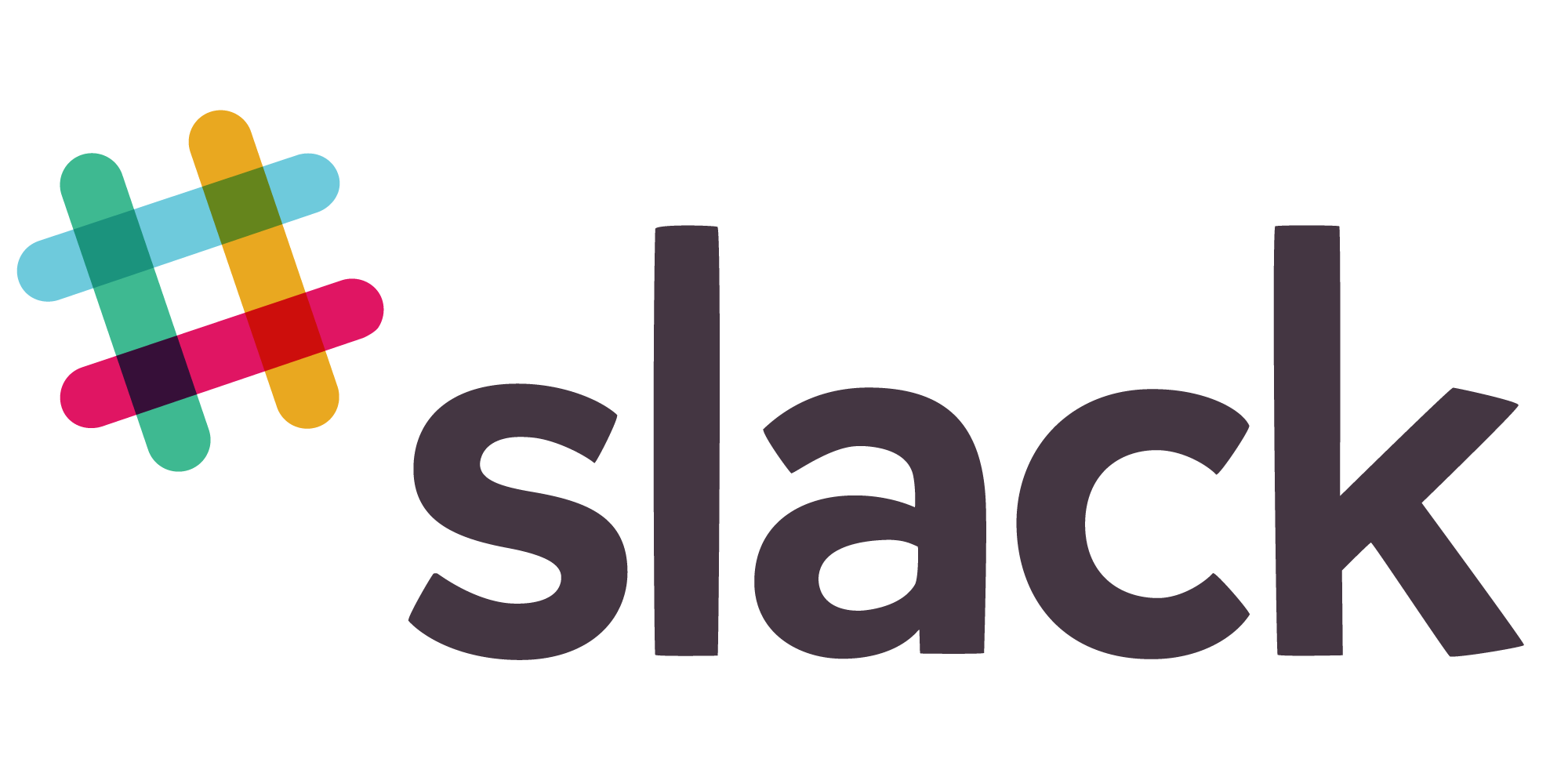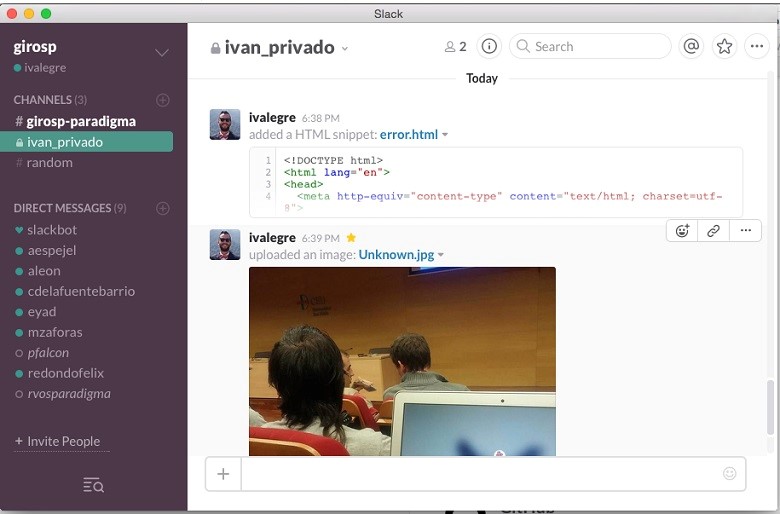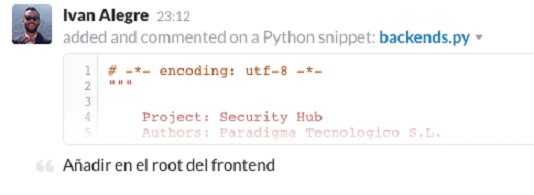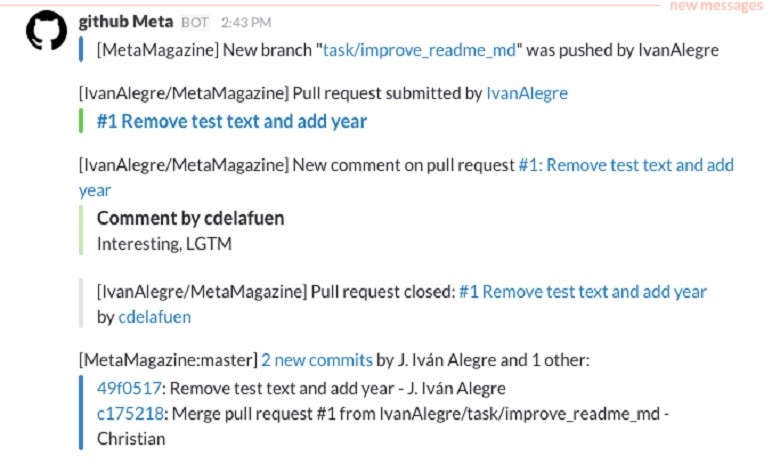Slack is a tool for cooperation between work teams, with hundreds of features that can help developers and any other group on their day to day. Its different integrations with third party services as GitHub, Bit Bucket, Jira or Jenkins as well as the possibility of adding code snippets and highlighting your favorite messages differentiate it from other now classic tools such as Skype or Hangout.

It has a well-rounded web app as well as native apps for almost every mobile or computer operation system.
The idea of using Slack came up during a sprint retrospective. Several scrum members had complained about the poor user experience of Skype for Linux. So one of our coworkers in Paradigma Digital suggested to use Slack and even though it started as an internal pilot test, people from the client have begun joining our team.

A XXI Century Chat
It’s all based on channels either public or private. In those that are public anyone can freely go in and out without asking for anyone’s authorization while you can only access those that are private when invited by someone. A public channel including all members of the team is created by default as well as another #random one used to comment about things that are less related to “actual work”.

Any message can cause a reaction, which means you can add any emoji as an answer to the message. You can also anchor messages to the channel so that they are always available, highlight those you choose as favorites or copy links to a specific message and then send it.
You can do almost anything from the message box thanks to the different actions. Set up an alert with /remind, go into absent mode with /away, change to a different chat with /open or /feed to manage the channel’s RSS (if there is one).
Mentions are one of the strongest features of Slack. You can notify someone in particular by typing @ (what a surprise!) followed by a username. There are special mentions as typing @everyone in your main channel or @channel in the rest of the channels in order to call the attention of all its members and @here to mention all of those active at the moment.
With the mention system configurable notifications become much more important. It’s much easier to partially silence certain channels so that you only get notifications from them whenever you are mentioned. On the other hand you can also set up notifications whenever there is a keyword from the ones you’ve selected typed in the conversation.
The messaging search engine allows date filters, search by channel, private messaging and searching in the attach content.

The management of file attachments in Slack is remarkable. For starters it distinguishes different types of attachments so that if there is a source file it will add it as a snippet. And snippets look great in Slack.
You can add comments to any attached file so that a there can be a conversation thread around the attached file.
Finally, reminders are quite outstanding with just a:
/remind @aleon por favor, compila el kernel 12:00
A Slackbot private message will pop up to @aleon asking him if he has finished the task or if he wants to be reminded later.
Integrations
At the time of writing there are 88 possible integrations of Slack with third parties and rising. It allows other services to automatically publish a message in the cannel you choose whenever an action takes place.
In that way our GitHub allows you to set up notifications for Pull Requests that are opened or closed, incident activity, new comments in Pull Requests or even new commits.

With Jenkins plugins you can set up notifications for when the build fails, for when there are broken unit tests after the last deployment or for when everything has gone back to normal and you can go and have some coffee.
Integration with Jira is also very useful in terms of getting annoyed when you immediately see that they have reopened that bug that took you so long to fix.
It can also be integrated with Heroku and even with IFTTT which opens a new set of possible integrations. Nagios and Sentry will work well for you if you work on operations.
Things that can be improved
But nor everything in the garden is rosy and Slack isn’t perfect. First off it doesn’t allow calls or video calls so you will have to continue using Skype or Hangout for that. You do have the /hangout command that instantly creates a chat room but it will be out of Slack.
Even though you can enjoy almost all of Slack features for free, it is a paid platform (with a limited free trial test) in which you will have to pay for things like for example, adding invited users to a team or adding more than ten integrations in your team.
On the other hand, even though you can be part of different teams at the same time, to switch from one team to another in the web application is somewhat artificial and not very useful. It works a bit better in native apps but we have also noticed one or two problems there.
And there are GIFs!
Didn’t I said it? You can see tweets, YouTube videos and Vimeo by only copying the link, but……
Internet is a series of .gifs
So…
[caption id="" align="aligncenter" width="342"]
(Fuente: imgur.com/)[/caption]
Comments are moderated and will only be visible if they add to the discussion in a constructive way. If you disagree with a point, please, be polite.




Tell us what you think.